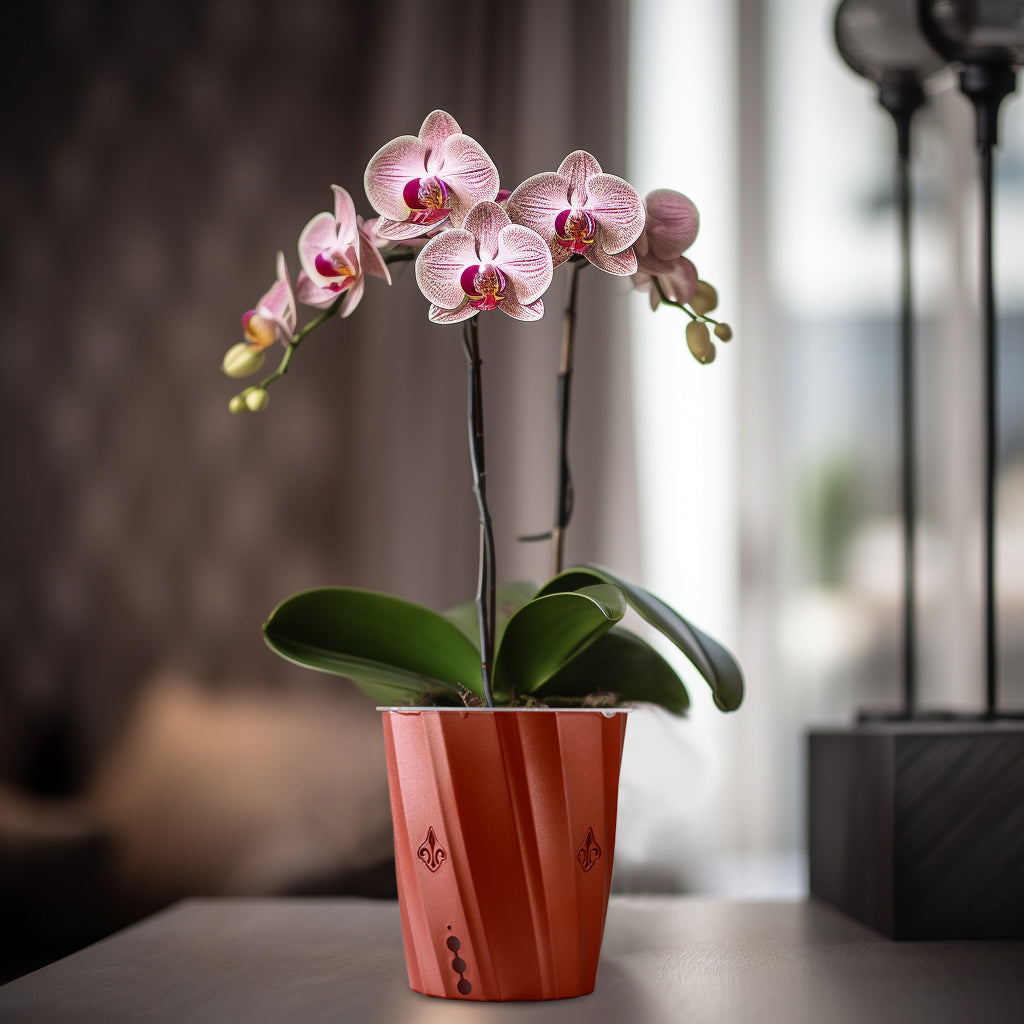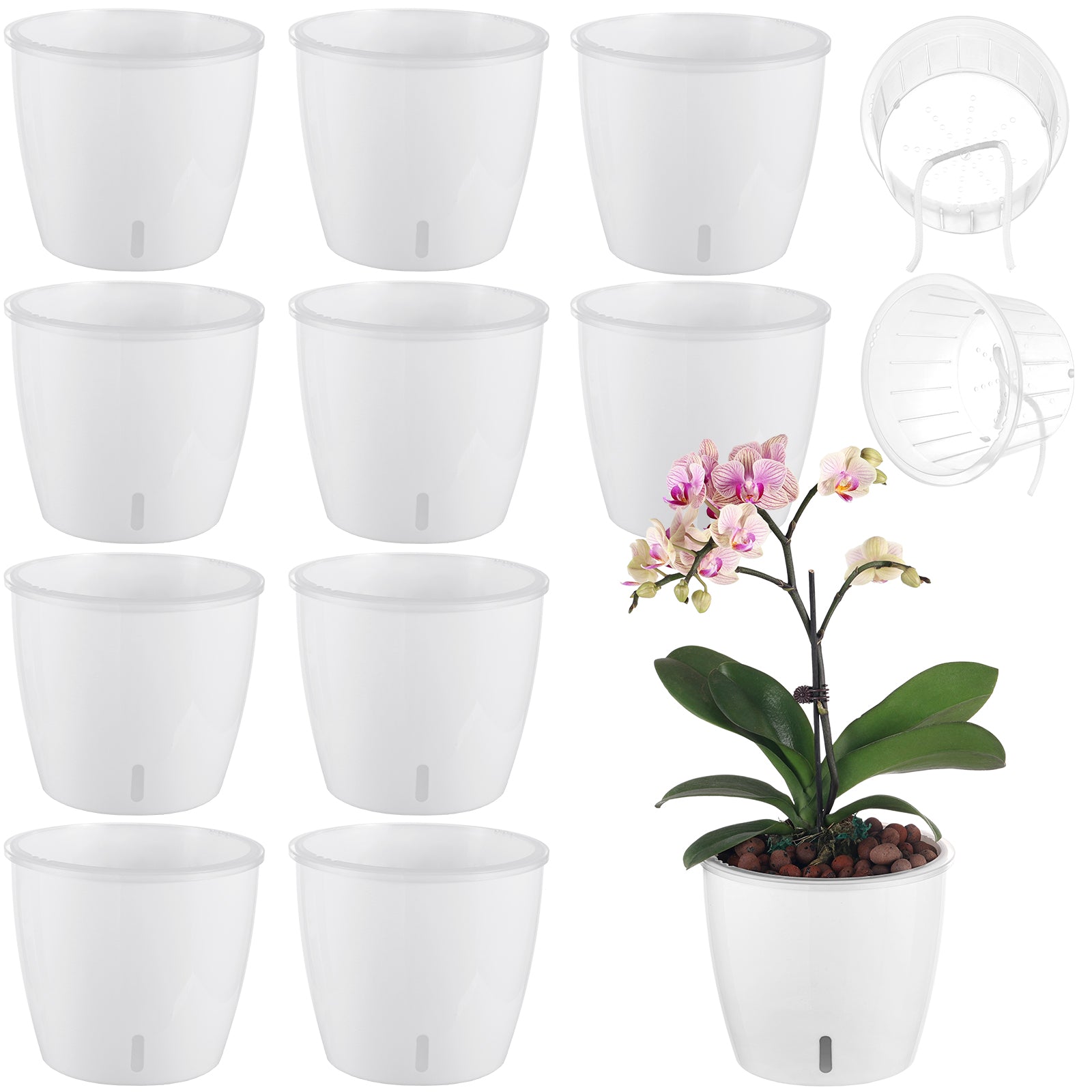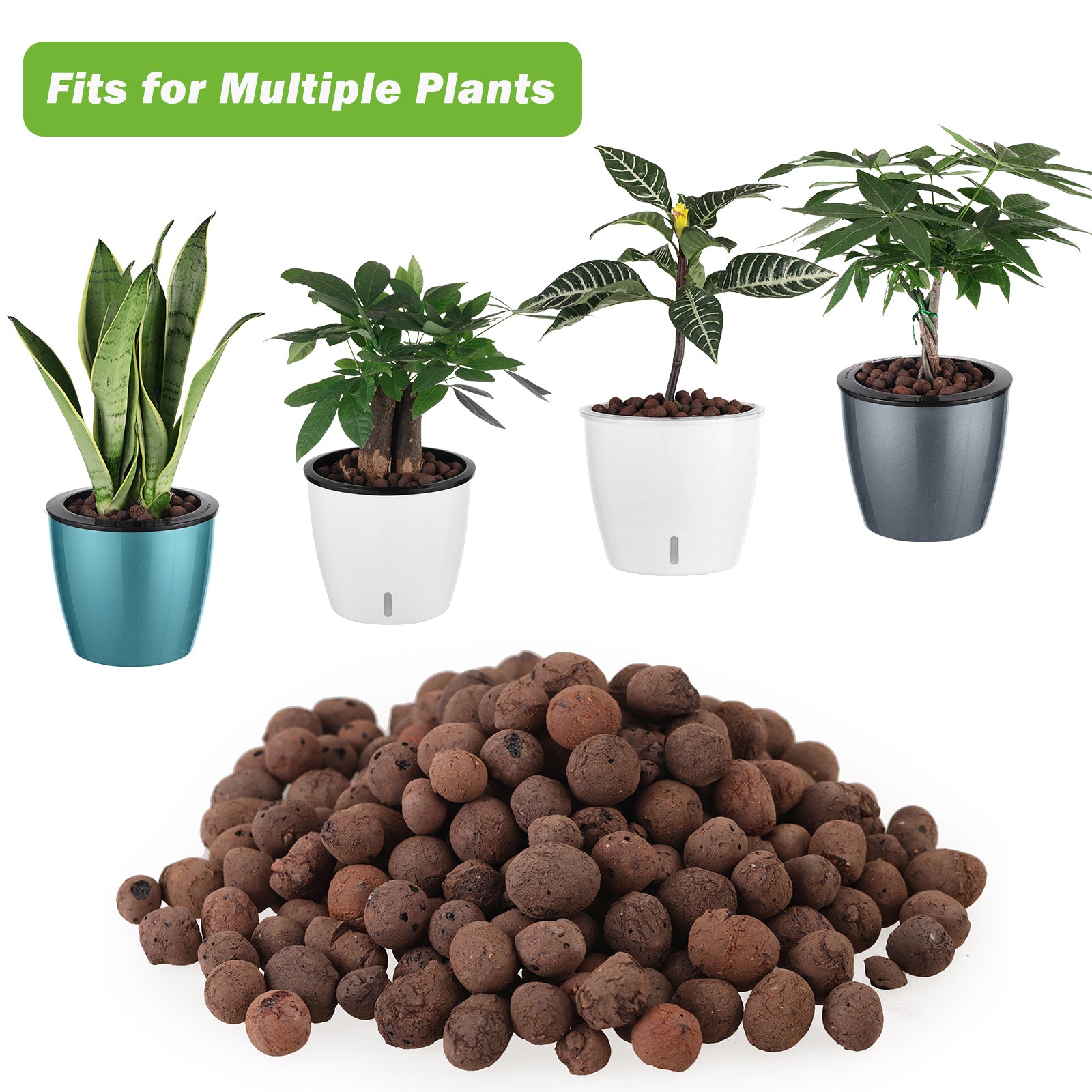How to Fix Your Spider Plant Leaves Yellow (Causes and Solutions)
Spider plants (Chlorophytum comosum) are one of the most popular houseplants and for a good reason. They are easy to grow and require little maintenance. However, the hardiest of plants can sometimes experience problems. One common issue is when the leaves of a spider plant begin to turn yellow.
There are a few possible reasons for this. It could also react to a sudden temperature change or light. It could be due to too much or too little water or a sign of a nutrient deficiency.
A with self-watering pot can help to prevent overwatering by providing a steady supply of water to the roots, even if you forget to water your plant for a few days. This can help to keep the leaves from turning yellow. for a new look you can also try head planter with self watering wick.
If you notice that your spider plant leaves are turning yellow, don’t panic. Read on to learn what to do in this situation. In this article, we will discuss why spider plant yellow leaves & how to fix them.
Let's get started
Why do Spider Plant Leaves Turn Yellow?
Spider plants, often known as "airplane plants," are among the most popular houseplants. These hardy plants can tolerate various conditions, from low light to bright light, but they can still suffer from problems like yellow leaves.

If your spider plant leaves are yellowing, it could be caused by various factors. The most common cause of spider plant yellow leaves is incorrect watering.
Another potential cause of spider plant pale leaves is too much direct sunlight & insufficient light. Spider plant turning yellow leaves can be caused by pests, such as spider mites or mealybugs.
If you notice yellow spots on the leaves, this could be caused by a pest infestation. If your spider plant leaves are yellowing, it could be caused by any of the above & other issues.
Make sure you adjust your spider plant problem. With the right care and attention, you can get your spider plant back to health in no time.
Let's go to discuss all factors one by one, why spider plant leaves turning yellow & how to fix them.
Read More About Snake Plant
Causes & Solutions of Yellow Leaves on Spider Plants
One common problem with spider plants is yellow leaves. This can be caused by many factors, including too much or too little water, nutrient deficiencies, or even pests.

Yellow leaves can also signify stress caused by dramatic changes in temperature or light conditions. If you're noticing yellow leaves on your spider plant, here are a few possible causes and solutions. Read here to know more about watering of spider plant.
Overwatering
If you’ve noticed your spider plant’s leaves turning yellow, it’s most likely due to overwatering, and it’s important to take steps to correct the problem. Overwatering leads to yellowing leaves on a spider plant in two ways.
First, it can lead to root rot, which will cause the leaves to turn yellow and eventually die. Second, the leaves on a spider plant that is overwatered will become limp and gradually turn yellow.
The cause of this is due to a lack of oxygen in the soil. Too much water is present, and oxygen is pushed out when the soil is overly saturated. This means the roots can’t “breathe,” and the leaves will start to turn yellow.
Solution
The most important thing is allowing the soil to dry out completely before you water it again. It would be best if you also took the opportunity to repot it in fresh soil with better drainage. Read more about Snake plant soil.
This will help ensure the soil isn’t too saturated, and the roots get enough oxygen. It’s also important to monitor the soil moisture levels closely.
The best way to do this is to insert your finger into the soil and check for dampness. If the soil is still damp, wait to water it until it has dried out completely. If it feels dry, then it’s safe to water your spider plant again.
If you're looking for a low-maintenance option for your spider plant, then a self-watering planter is the best choice.
Self-watering planters are a great option for those who want to ensure their plants are getting the water they need, and they're also a great way to save time and effort.
At Planterhoma, we have a wide selection of self-watering planters. Whether you're looking for a small planter for your windowsill or a large one for your patio, we have the perfect option.
Our self-watering planters are made from high-quality materials and come in various styles. Plus, they're easy to set up and use, so you can start enjoying beautiful, healthy plants with little effort.
Temperature
Temperature is one of the most common causes of yellow leaves on a spider plant. Spider plants need a specific temperature range to thrive. They prefer a temperature range of 65 to 75 degrees.
If the temperature is too high or too low, it can cause the leaves of your spider plant to turn yellow. In the same way that temperatures can damage leaves, conditions on the cooler side can also have the same effect.
It is not recommended to store spider plants below 55 degrees Fahrenheit since it may cause the leaves to turn brown and die.
On the other hand, when the temperature is too low, the plant will suffer from cold stress. Cold stress causes the plant to slow growth, and the leaves may turn yellow or brown.
Solution
Fortunately, the issue of yellow leaves due to temperature is easy to fix. The first step is to ensure that your home's temperature is within the ideal range of 65 to 75 degrees.
You can use a thermometer to measure the temperature in your home. You can move the spider plant to a warmer spot if the temperature is too low.
This could be a sunny windowsill near a radiator or a heated greenhouse. Temperature fluctuations can also cause yellow leaves on your spider plant.
This is because the plant can't adjust properly when the temperature is too hot during the day and then too cold at night. To prevent this, try to keep the temperature more consistent.
Insufficient or Too Much Light
If your spider plant leaves turning yellow, it could be a sign that it’s not getting the right amount of light. Spider plants are native to the tropics and do best in bright, indirect light.

If you’re noticing yellow leaves, it’s likely a sign that it’s either getting too much or too little light. If your spider plant is exposed to too much light, its leaves will become yellow and bleach out.
This could signify that it’s receiving too much direct sunlight or being kept in an area with too much artificial light. On the other hand, if your spider plant’s leaves are turning yellow due to too little light, you’ll need to move it to an area with more light.
Solution
When it comes to spider plants, the key is to find a spot that gets the right amount of light. Too little light will cause the leaves to turn yellow, and too much light will cause the leaves to bleach out.
Spider plants prefer bright, indirect light, so try to find an area near a window that gets plenty of light throughout the day. Finding the right balance is the key to keeping your spider plant healthy and happy.
It is recommended to place Spider Plants in bright, indirect sunlight for at least 4 to 8 hours every day.
Humidity Too High or Too Low
When caring for your spider plant, humidity is crucial for keeping it healthy. Too much or too little humidity can cause spider plant leaves to turn yellow, and it’s important to understand the ideal humidity levels for your plant.
In general, spider plants prefer higher humidity, so if the air in your home is dry, the leaves may start to turn yellow. If the humidity is too high, the leaves may also become yellow, as the excess moisture can cause root rot.
Solution
The ideal humidity range for spider plants is between 40-80%. Maintaining this range is important to ensure your spider plant stays healthy. To check the humidity levels in your home, you can purchase a hygrometer to help you monitor the humidity.
If the humidity in your home is too low, there are several steps you can take to increase the humidity for your spider plant. You can mist your plant leaves with distilled water, as it will raise the humidity around your plant.
You can also purchase a humidifier, as this will help to increase the humidity in the room.
If the humidity in your home is too high, ensure your spider plant is not sitting in water and has proper drainage.
Also, it’s important to ensure that the soil is not overly saturated with water. If necessary, you can purchase a dehumidifier to help lower the humidity in the room.
The Age Factor of the Plant
As your spider plant matures, its leaves will gradually turn yellow. This is a normal part of the aging process. The foliage on older trees may appear yellow at first, then turn brown, and finally, fall off as they age.
No need to worry about this because it is a naturally occurring process. If you want to keep your plant looking its best, you can gently remove the yellow leaves as they appear. Although spider plants can live for many years, the foliage will eventually wilt and die.
Spider Mites and Pest Attack on Spider Plant
While spider plants aren't particularly susceptible to pests and diseases, they may be affected by a few pests or diseases that can cause yellowing or browning of the leaves.
If your spider plant's leaves turn yellow, it could be due to pests. A few different pests can cause yellow leaves, The most common pests are spider mites, mealybugs, and aphids.
All of these pests and bugs are attracted to the succulent foliage of the spider plant, so it’s important to take action as soon as possible to prevent them from spreading and causing further damage.
Solution
Aphids can be controlled with insecticidal soap. Mealybugs can be controlled with an insecticide such as neem oil, although if there is a large infestation, it’s best to contact a professional for help. Spider mites can be controlled by carefully spraying the leaves with water and mild soap.
How to Prevent Yellow Leaves on Spider Plants?
Spider plants (Chlorophytum comosum) are easy to care for and tolerate a wide range of growing conditions. However, spider plants can sometimes develop yellow leaves.

You can do a few things to prevent spider plant yellow and droopy. First, make sure you are fertilizing your plant regularly. In the spring and summer, it is recommended to use a balanced 20-20-20 NPK fertilizer once or twice a month.
Spider plants need a consistent supply of nutrients to stay healthy. Mix coco coir, perlite, and pine bark in a ratio of 1:1:4 when preparing the potting mix.
If the baby spider plant pale leaves are damaged, prune them immediately or once every spring when they are newly grown.
Spring is the best time to transplant your Spider Plant. Plants that are rootbound should be replanted. Repotting the plant frequently can stress it.
Ensure that a potting mix holds moisture but drains well at the same time. Always maintain a pH level of 6 to 7. Check your plant for pests and diseases.
If you see any signs of pests or disease, treat the plant immediately. Lastly, make sure your plant is getting enough light. Spider plants need bright, indirect light to stay healthy.
By following these steps, you will be able to prevent spider plant turning yellow and keep your plant looking its best. With a little care, your spider plant will thrive and provide beautiful foliage for years.
Read More
How To Make Your Homemade Fertilizer for Indoor Plants
Conclusion
When your spider plant leaves turning yellow, it can signify something is wrong. To keep your plant healthy and happy, it's important to take action quickly and do the following: adjust the light conditions, check the soil and water, and fertilize regularly.
Additionally, ensure that the temperature and humidity levels are suitable for the plant. With these steps, you should be able to successfully revive your plant and restore it to its former glory.
FAQs
Can You Save Yellow Spider Plant?
Yes, it is possible to save spider plants. It is possible to save your spider plant's yellow leaves and make them thrive again if you take proper care of them.
Why Are the Tips of My Spider Plant Turning Brown and Yellow?
The tips of your spider plant may turn brown and yellow due to a lack of nutrients, underwatering, or pests. To correct this, ensure to fertilize regularly, water properly, and keep an eye out for pests.
Does Spider Plant Need Direct Sunlight?
No, spider plants do not need direct sunlight. They are well-suited for growing in bright, indirect light.
Read More About Leaves Prole of other Plants
Brown Spots On Monstera Leaves
Why Are the Bird of Paradise Leaves Curling
Why My ZZ Plant Leaves Turning Yellow?
African Violet leaves drooping
Why is My Jade Plant Dropping Leaves?
Why is My Snake Plant Turning Yellow?
African Violet Leaves Turning Brown
African Violet Leaves Problems

















Leave a comment